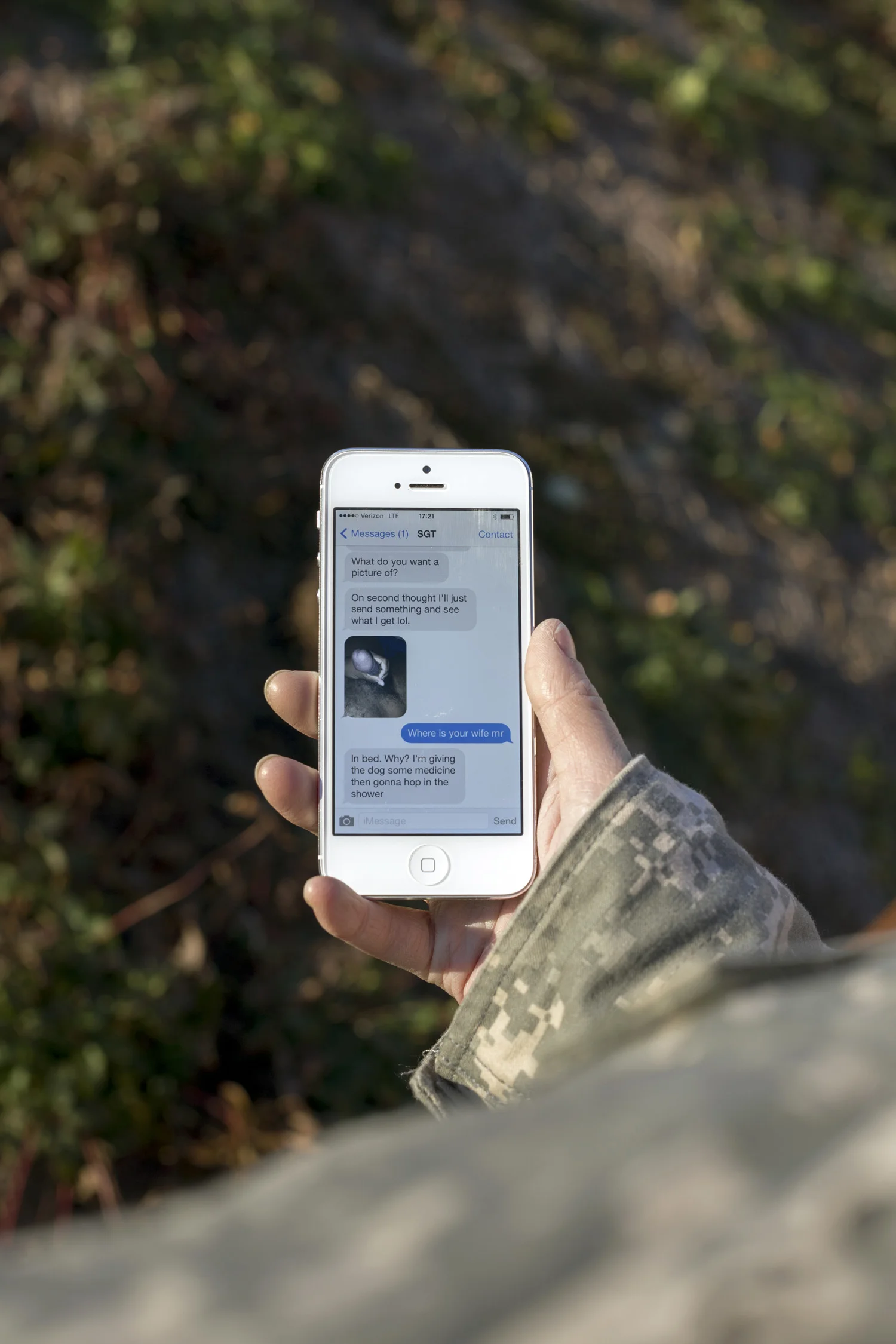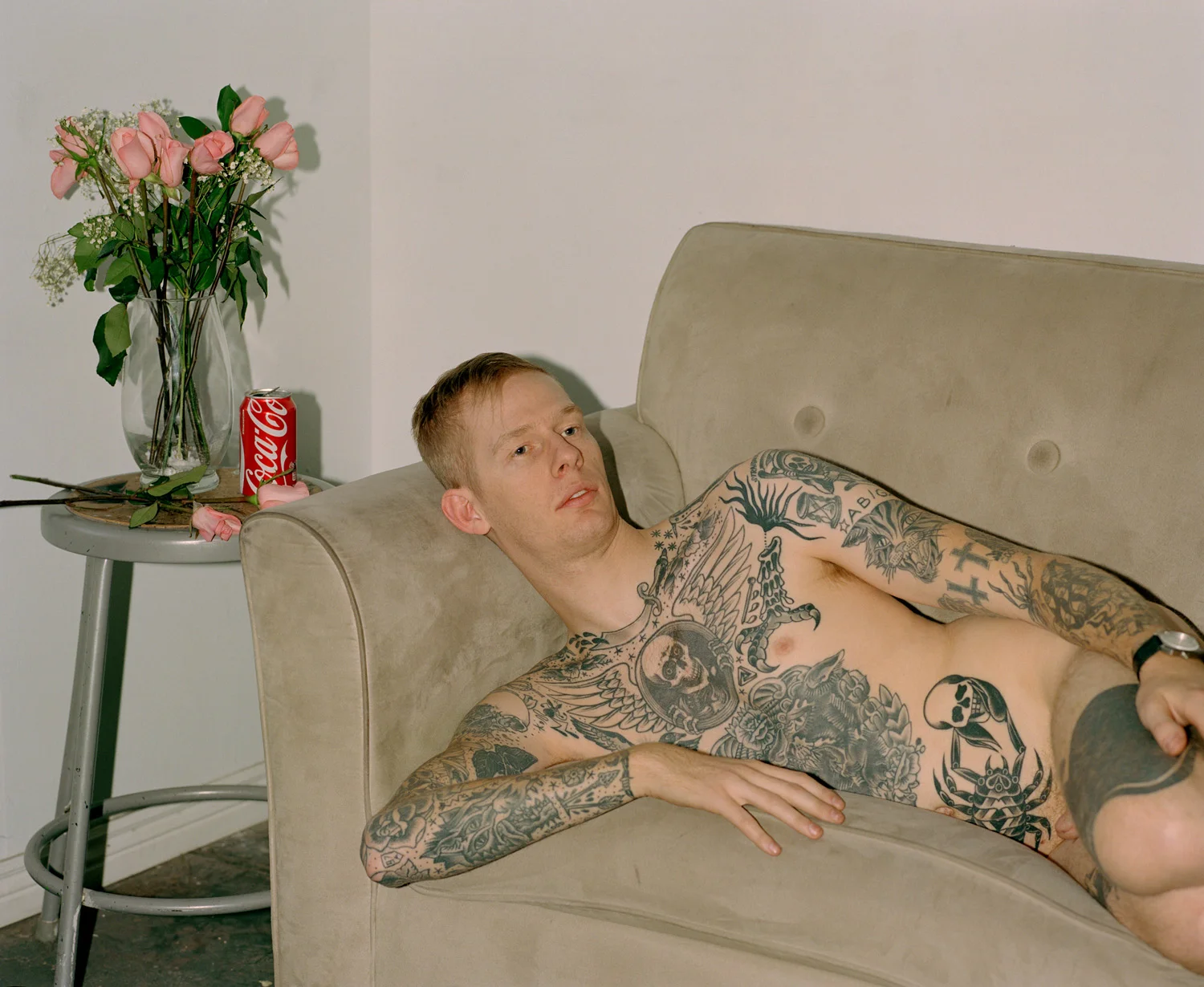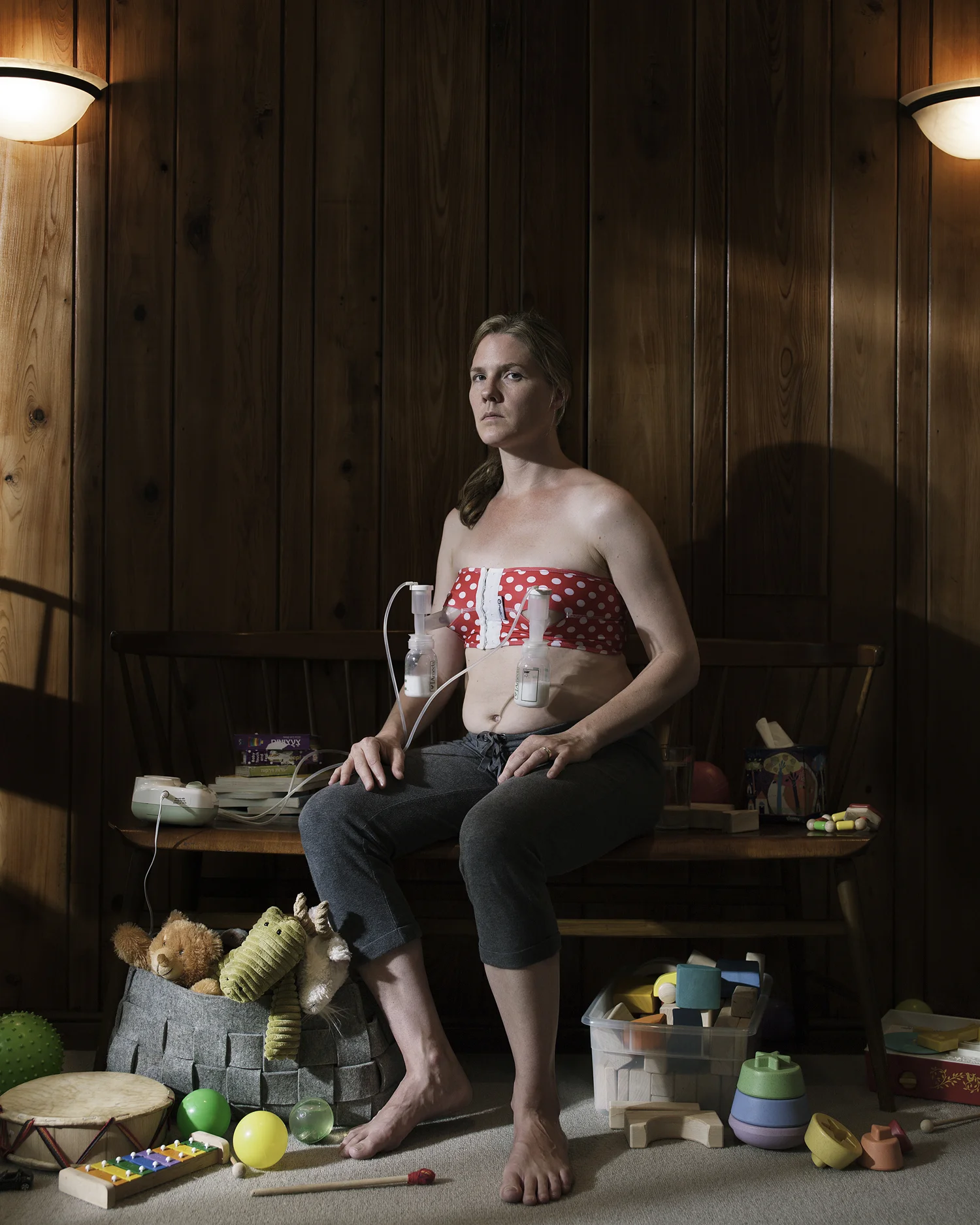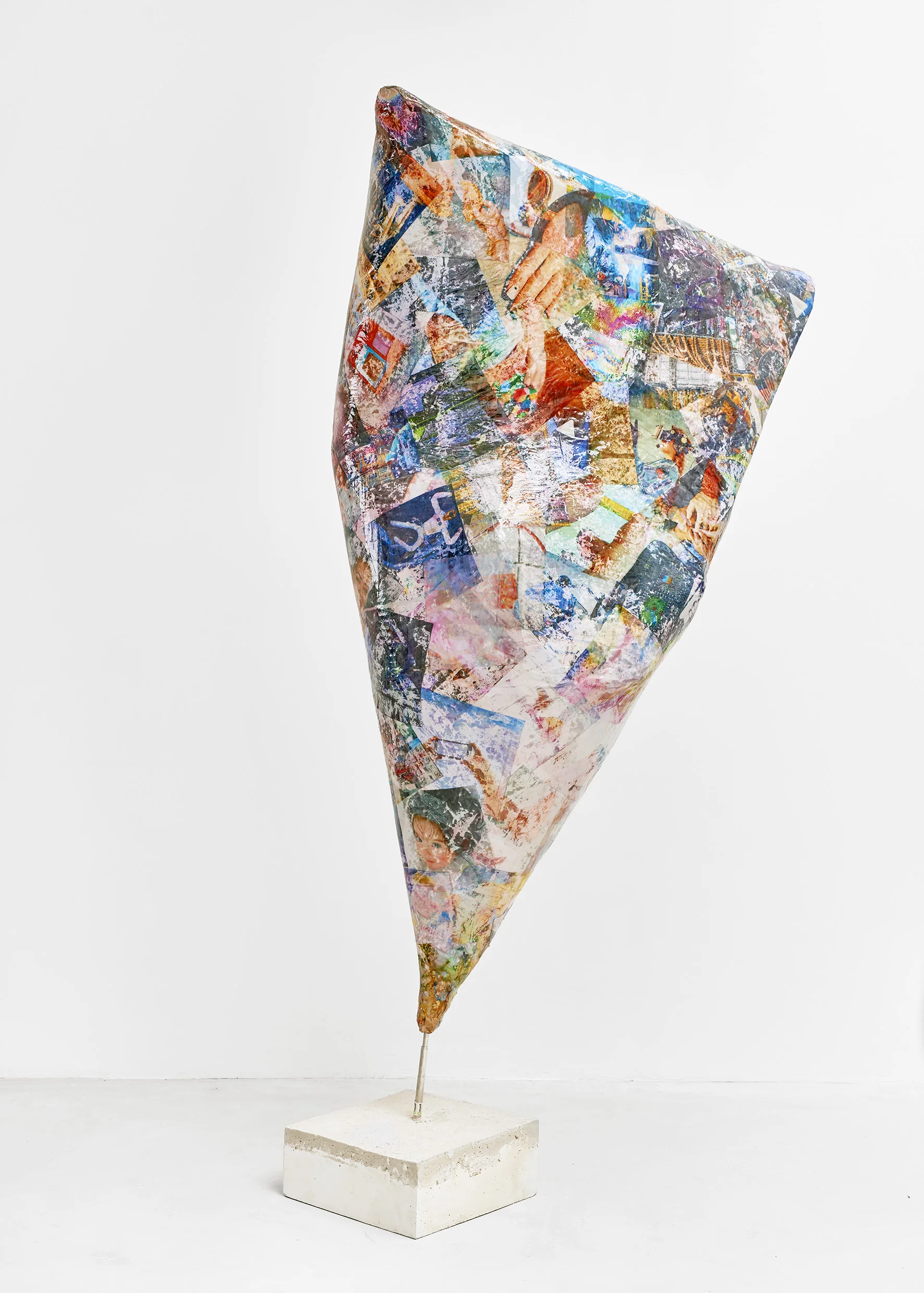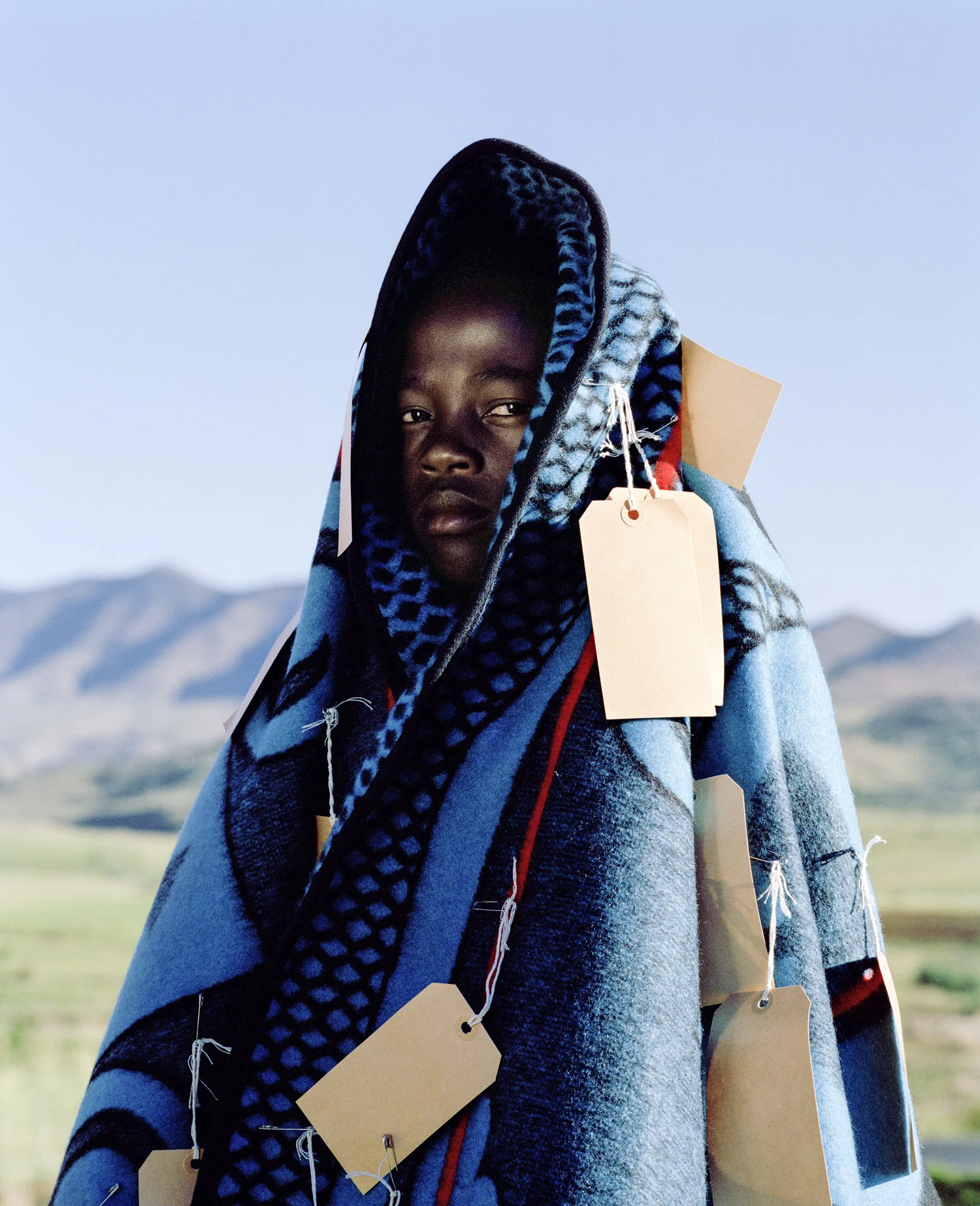In 2009, while still in college, Romke Hoogwaerts started Mossless, a thoughtfully produced, no-frills blog where he interviewed a new photographer every two days. By 2012, he was putting out books, and in 2013, while concurrently working as a New York City bicycle tour guide for the summer, began editing Mossless 3: The United States with Miriam Grace Leigh, a comprehensive photographic survey which landed itself on TIME, and unsurprisingly, Humble's best-of-2014 photobook lists. Hoogwaerts latest endeavor, Public, Private, Portrait, a collaboration with Charlotte Cotton and the International Center of Photography, is a portraiture-focused parallel to ICP's upcoming launch exhibition of a similar name ("Public, Private, Secret"), with a glimpse into how the genre might address some of the blurry lines between these very issues. Working with editor Jonah Rosenberg and designer Elana Schlenker, it promises to be an immaculate publication, well worth funding through their current Kickckstarter campaign. We spoke with Hoogwaerts to get a better picture.
Jon Feinstein: Why portraiture? Why now?
Romke Hoogwarts: Portraiture is as relevant today as it was in all of art’s history. It’s just very different today than it was centuries ago, decades ago, even just a few years ago. It will always be worth looking at a certain era’s approach to portraiture, especially if it is given the right kind of context. This book is all about seeing certain kinds of portraiture from as many contemporary angles as possible.
JF: Aside from being published as a contributor reward, will #selfies factor into this book (and how)?
RH: Yes, there’s a number of artists in the book who are contributing work relevant to that theme. Some are directly invoking the approach in their work, others are commenting on this strange state of constructing one’s own social identity — which is important as virtually everyone in the developed world is implicated in the act when they participate in social media. There is even a brilliant essay on the use of selfies by political candidates, written by David A. Banks. As you mentioned, “benefactor” backers on our Kickstarter campaign will have their selfie published, in lieu of some list of names. It’s just more fitting, isn't it?
JF: How does this book speak to the history of portraiture (photographic or otherwise)?
RH: Well, society today looks at photography very differently today than it did before, as well as to the status of photographers, since the privilege of the nomenclature has basically been obliterated by the medium’s accessibility. That has inevitably affected all of fine art photography, which is sometimes trapped in an existential state. There is a lot of work that visually and metaphorically speaks to that quandary and there is much of that in the book.
More simply, however, is that now every single one of us are worthwhile subjects of photographic portraiture. There is a beautiful egalitarian spirit to this democratization of photography. Think about it: so much of what a general audience of photography loves in portraiture series are typologies of people, all kinds of people, in so many different ways. Many Instagram profiles has become famous for this kind of curation. Needless to say, that simply wasn’t feasible before and there’s simply no need to be selective.
Furthermore, that same democratization opened the gate to a whole lot of posturing—with which I mean, people asserting their personal identities through the medium. It isn't new in itself, but the hyperactivity of it is, as well as its strength in social mobility. So many people have been able to show themselves for who they really are, or who they would prefer to be seen as.
Lastly, portraiture is now employed so much in archival settings that there are plenty of fascinating typologies to look at which are purely incidental, and which have been appropriated by artists in a variety of ways.
JF: Tell me a bit more about the public/private theme.
RH: Well, one of the most fascinating aspects of this time are the shifting boundaries of privacy. Jurgen Habermas in The Structural Transformation of the Public Sphere weaves a densely illustrative history of those shifting lines. What follows is a wholly inadequate summarization but an attempt is necessary: in ancient Greece, anything outside the home was public. In feudal days, only the King lived in a sense of ‘public’. With the development of the press, the ‘public’ effectively became the readers of newsletters, a medium that was swiftly co-opted by authoritarian governance (incidentally creating the bourgeois class—the educated society that carried the ‘public’ but were relatively powerless to affect it), which later evolved into television. In the last century, the family home has been the battlefield of public and private civility, and today, that war has burrowed within individuals themselves. It is this final chapter that this book is about and it does sometimes feel like the fight between ‘public’ and ‘private’ is reaching a kind of critical mass.
Today social media is essentially the setting, the battleground of that internal war. When we lend a great deal of meaning to our personal profiles, it inexorably makes what is private, public. And take note: that is not necessarily a caveat. It's just different. It's the contemporary stage of society's goings-on.
That’s why this book isn’t really about street photography, nor surveillance per sé. If anything, the book is about me — the collective “me”. It’s hard to pin down though, because the book looks at a very wide spectrum of projects that all dance around the theme in different ways. Because of that, there’s a sense of tension in our selection, as some of the work is made as commentary on the theme, whereas others are simply implicated by it.
JF: What was your process for selecting the photographers?
RH: We don’t really take submissions, we bookmark projects over long periods of time. We do a lot of scouting on the internet. We talk to a lot of artists and visit plenty of shows. We are subscribed to a lot of newsletters. Inevitably we will miss great things but that is inevitable regardless of the selection process.
JF: How did the collaboration with Charlotte and Jonah come about? How have you collaborated with outside curators in the past?
RH: Charlotte approached my table at last year’s New York Art Book Fair and told me how much she liked our new book and that she was interested in collaborating. I’m sure you can guess what my response was!
My first collaboration for Mossless was with Jesse Hlebo, an incredibly prolific artist and publisher who helped me enormously in the production and art direction of our first issue. Who needs a teacher when you can work with a collaborator like that? For a few years afterwards, I collaborated with my then-partner, Grace Leigh, and made many wonderful books together, including Issue Three: The United States (2003-2013). Being so close allowed us to consider our choices in a very deep way and we’d fight every argument to its bitter end. When it worked, it was brilliant. However, I don’t think Charlotte and I will have those kinds of arguments!
For this book, I'm also working closely with Jonah Rosenberg, who is contributing his editorial skills, as well as Elana Schlenker, graphic designer.
JF: As Mossless has evolved, you've gone from giving tours on bicycles through Brooklyn and Manhattan to photo editing at Businessweek, New York Times Magazine, and MSNBC. Has this influenced your curatorial work?
RH: Of course! What’s nice is that my practice with Mossless is very different and complementary to my professional photo editing — I personally generally work with already-published photography and re-contextualise from there. Professionally, that obviously doesn’t fly, and I’ve had the opportunity practice all kinds of image editing. At present I work mostly with wire photojournalism. But being a tour guide was also pretty helpful. For one, it gave me a bit of income and time to make Issue Three (after quitting my internships), I got to practice speaking to strangers, and learned a ton about this city’s history. It also got out of my damn chair.
JF: The title was "top secret" until a few days ago. Why the embargo?
RH: Since the title of Mossless 4 - ‘Public, Private, Portrait’ - connects to the title of Charlotte’s inaugural exhibition and program for ICP’s 250 Bowery space, we had to wait until the first major press coverage about ‘Public, Private, Secret’ had gone to press. But we obviously wanted to start creating some energy and Kickstarter support for ‘Public, Private, Portrait’ in advance. One of the things we did for that was to create a few huge versions of the covers to display in public.
Image Courtesy of Romke Hoogwaerts
Photographers include:
Signe Pierce, Anouk Kruithof, Ryan Pfluger, Amy Elkins, Kris Graves, Jen Davis, Daniel Mayrit, Ditta Baron Hoeber, Shohei Miyachi, Rachel Stern, Farah Al Qasimi, Molly Matalon, Gonzalo Bénard, Ben McNutt, Kalen Na'il Roach, Leah Edelman-Brier, Namsa Lueba, Bobby Scheidemann, Sabrina Jung, Stacy Kranitz, Tommy Kha, Zak Krevitt, Caroline Tompkins, Khalik Allah, Fumiko Imano and more, even a few painters.... Learn more about the project in the video below, and support the campaign HERE.





